
(a)
Interpretation:
Condensed formula for 2-methyl-2-hexene has to be drawn.
Concept Introduction:
Organic compounds can be drawn from its IUPAC name. Initially, the parent chain is identified from the IUPAC name. After that the carbon chain is drawn with carbon atoms alone. Next step is to add the substituents in the respective positions as indicated in the IUPAC name. Remaining valency of carbon atom is satisfied by adding correct number of hydrogen atoms.
Condensed structural formula is a simplified form of representation of a molecule. This gives the information about all the atoms present in molecule and the atoms are placed in sequential order which gives information about which atom is bonded to other atom.
(a)
Explanation of Solution
Given IUPAC name is 2-methyl-2-hexene. From this the parent

Numbering of each carbon has to be done as shown,

From the name it is understood that a double bond is present between carbon-2 and carbon-3.

Substituent that is present is a methyl group on carbon-2.

Remaining valency of carbon atom has to be balanced by adding hydrogen atoms.

Condensed formula can be obtained as shown below,
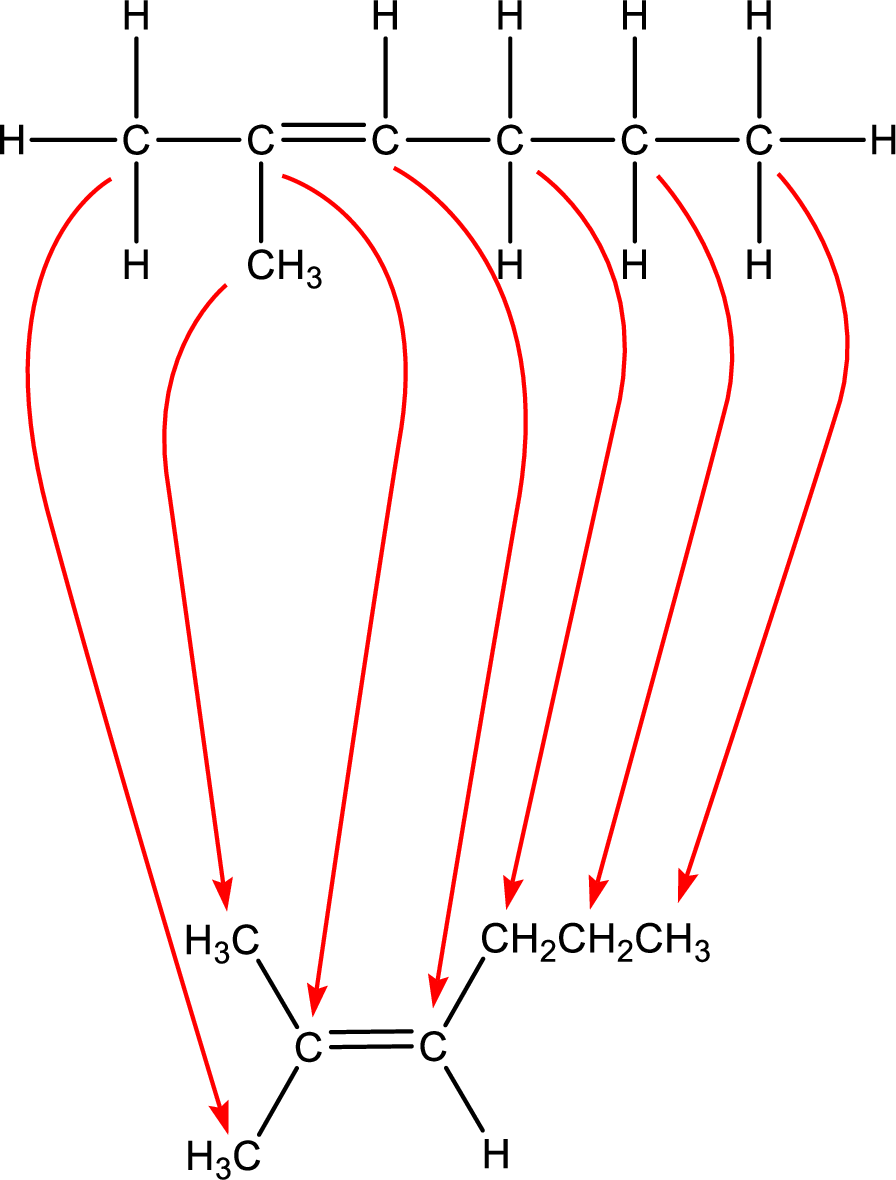
Condensed formula for 2-methyl-2-hexene is drawn as shown.
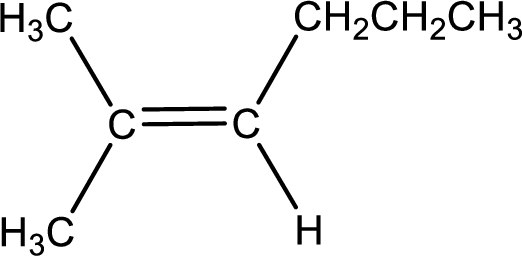
(b)
Interpretation:
Condensed formula for trans-3-heptene has to be drawn.
Concept Introduction:
Refer part (a).
(b)
Explanation of Solution
Given IUPAC name is trans-3-heptene. From this the parent alkane is identified as heptane. Heptane contains seven carbon atoms.

Numbering of each carbon has to be done as shown,

From the name it is understood that a double bond is present between carbon-3 and carbon-4.

As the stereo information is given as trans-, the hydrogen atom that is bonded to the carbon atoms across the double bond has to be in opposite side. Remaining valency of carbon atom has to be balanced by adding hydrogen atoms.

Condensed formula can be obtained as shown below,
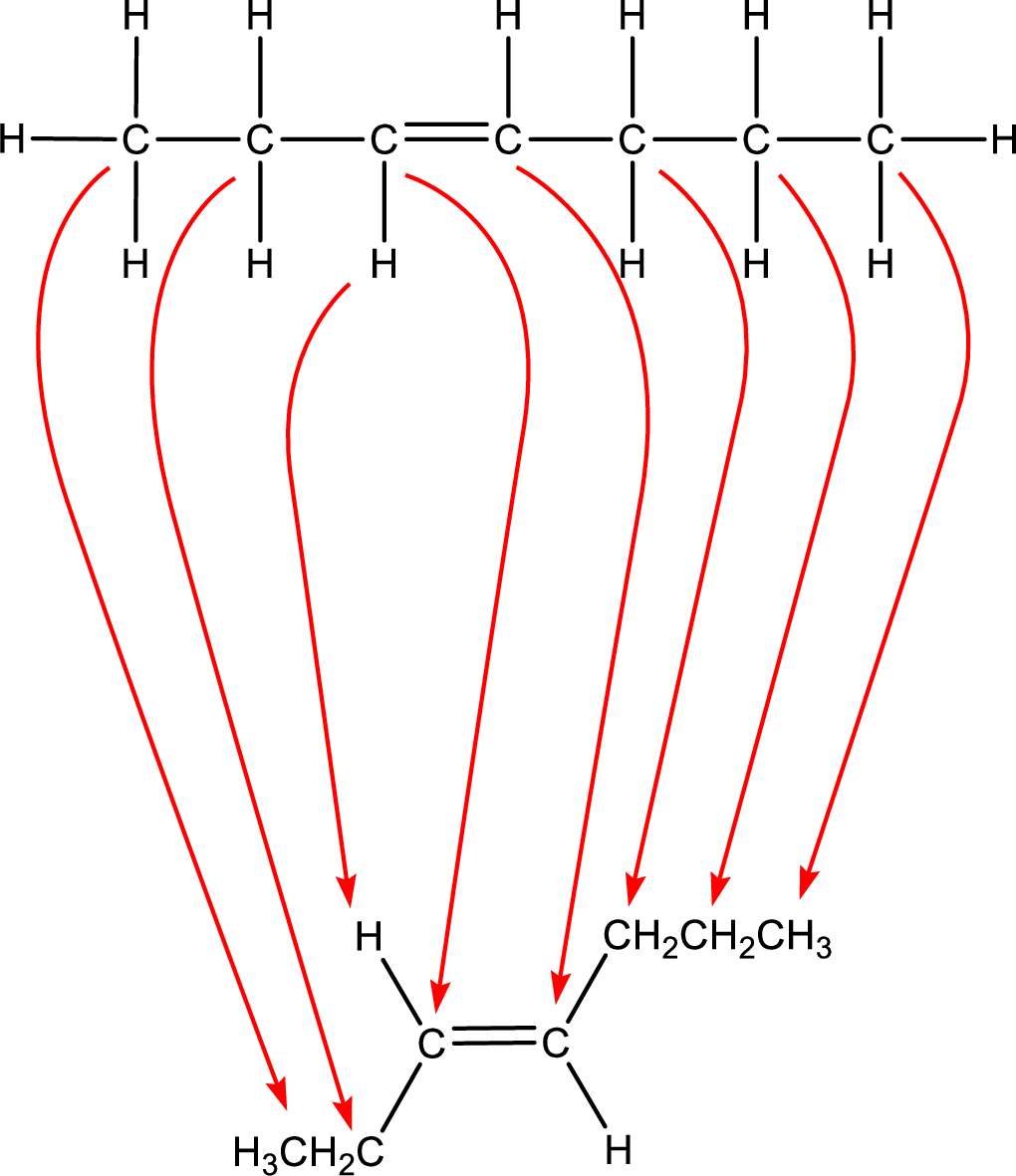
Condensed formula for trans-3-heptene is drawn as shown.
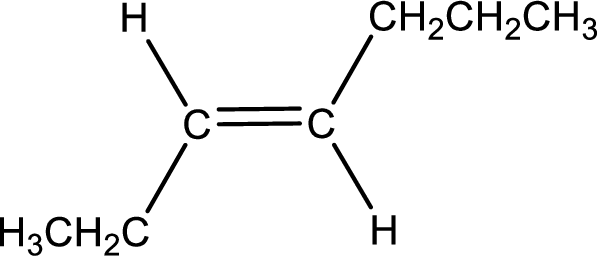
(c)
Interpretation:
Condensed formula for cis-1-chloro-2-pentene has to be drawn.
Concept Introduction:
Refer part (a).
(c)
Explanation of Solution
Given IUPAC name is cis-1-chloro-2-pentene. From this the parent alkane is identified as pentane. Pentane contains five carbon atoms.
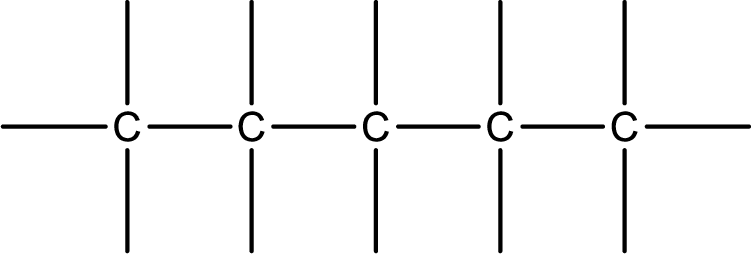
Numbering of each carbon has to be done as shown,
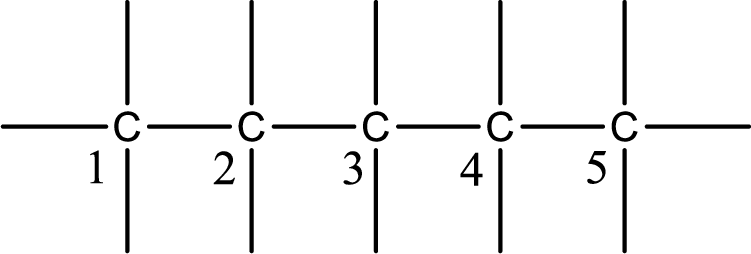
From the name it is understood that a double bond is present between carbon-2 and carbon-3.
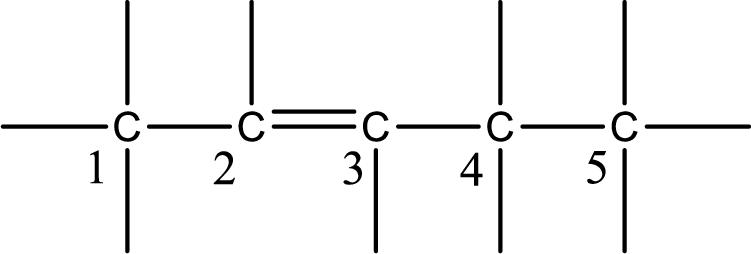
As the stereo information is given as cis-, the hydrogen atom that is bonded to the carbon atoms across the double bond has to be in same side. Subsituents present in the given name is a chlorine atom in on carbon-1. Remaining valency of carbon atom has to be balanced by adding hydrogen atoms.
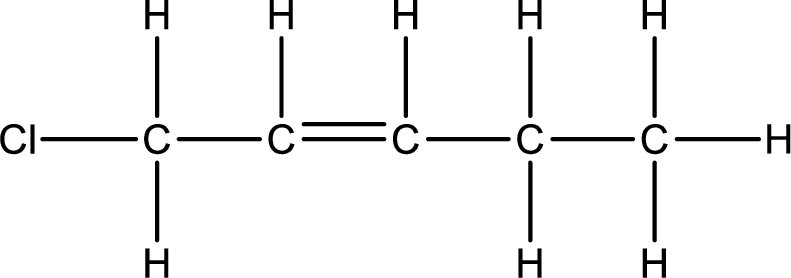
Condensed formula can be obtained as shown below,
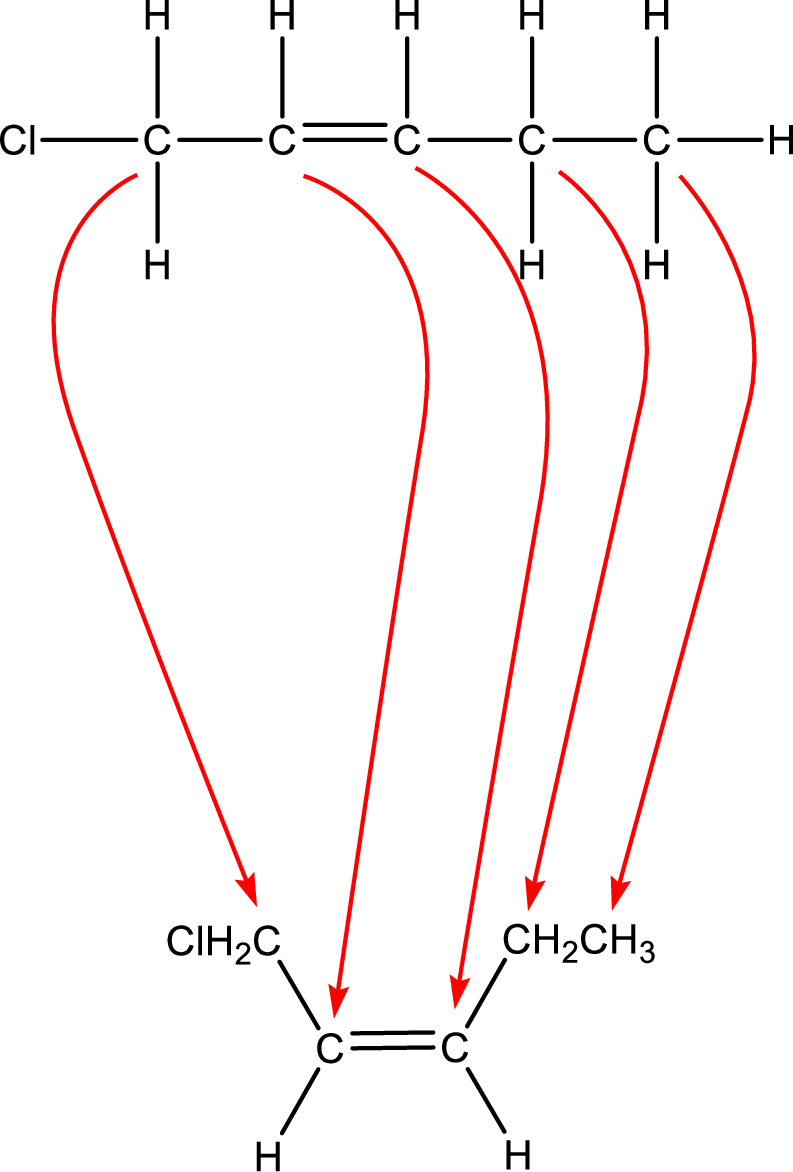
Condensed formula for cis-1-chloro-2-pentene is drawn as shown.
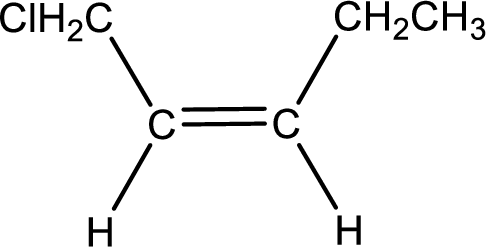
(d)
Interpretation:
Condensed formula for cis-2-chloro-2-methyl-3-heptene has to be drawn.
Concept Introduction:
Refer part (a).
(d)
Explanation of Solution
Given IUPAC name is cis-2-chloro-2-methyl-3-heptene. From this the parent alkane is identified as heptane. Heptane contains seven carbon atoms.

Numbering of each carbon has to be done as shown,

From the name it is understood that a double bond is present between carbon-3 and carbon-4.

As the stereo information is given as cis-, the hydrogen atom that is bonded to the carbon atoms across the double bond has to be in same side. Substituents present in the given name are a chlorine atom in on carbon-2 and methyl group on carbon-2. Remaining valency of carbon atom has to be balanced by adding hydrogen atoms.

Condensed formula can be obtained as shown below,
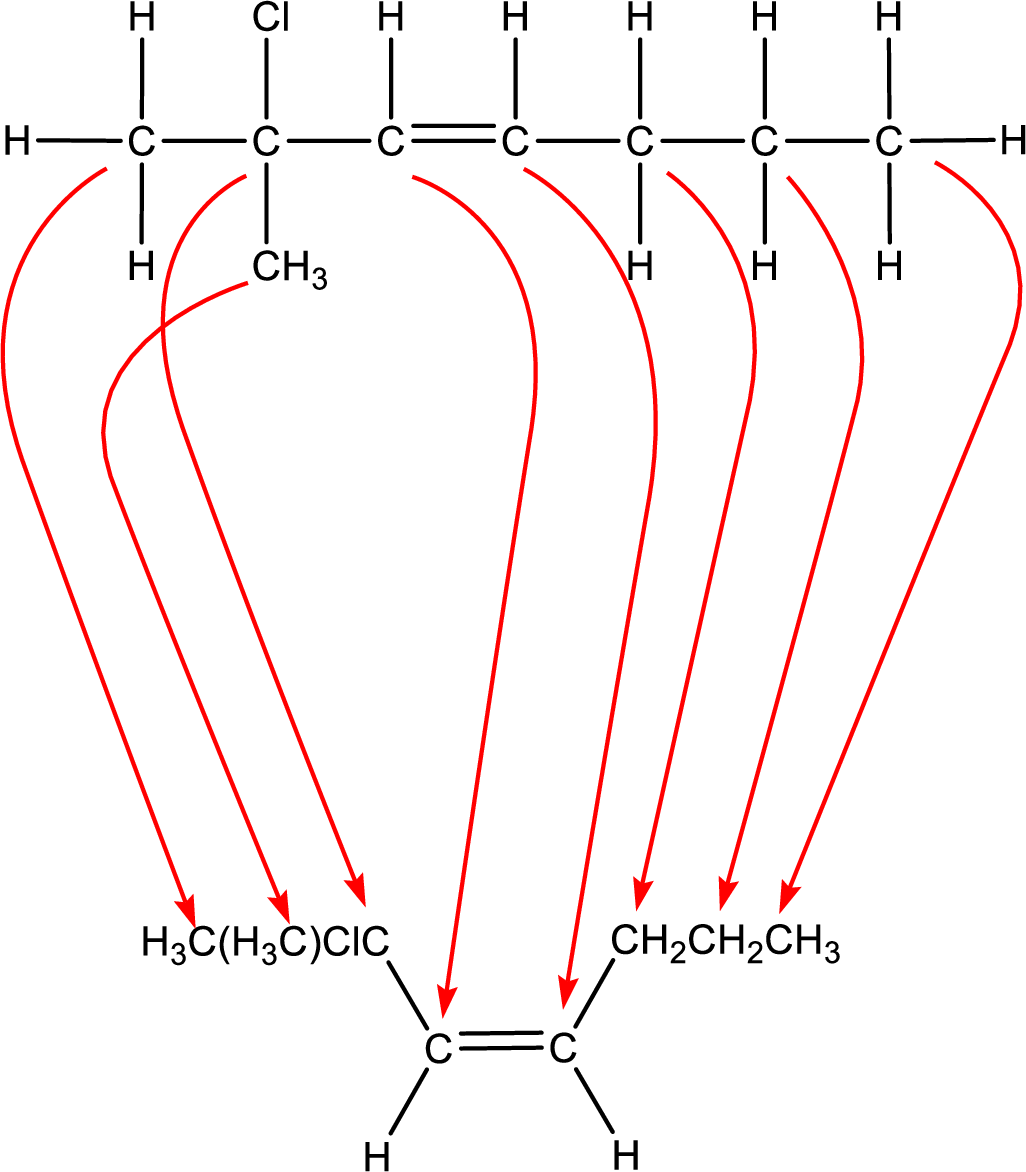
Condensed formula for cis-2-chloro-2-methyl-3-heptene is drawn as shown.
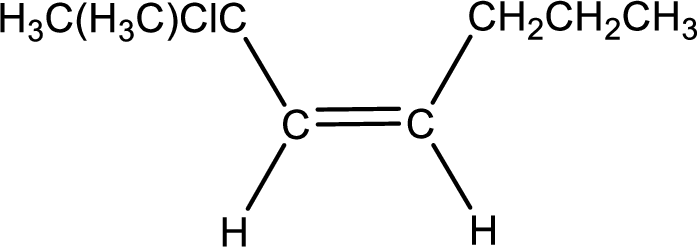
(e)
Interpretation:
Condensed formula for trans-5-bromo-2,6-dimethyl-3-octene has to be drawn.
Concept Introduction:
Refer part (a).
(e)
Explanation of Solution
Given IUPAC name is trans-5-bromo-2,6-dimethyl-3-octene. From this the parent alkane is identified as octane. Octane contains eight carbon atoms.

Numbering of each carbon has to be done as shown,

From the name it is understood that a double bond is present between carbon-3 and carbon-4.

As the stereo information is given as trans-, the hydrogen atom that is bonded to the carbon atoms across the double bond has to be in opposite side. Substituents present in the given name are a bromine atom in on carbon-5, a methyl group on carbon-2, and a methyl group on carbon-6. Remaining valency of carbon atom has to be balanced by adding hydrogen atoms.

Condensed formula can be obtained as shown below,
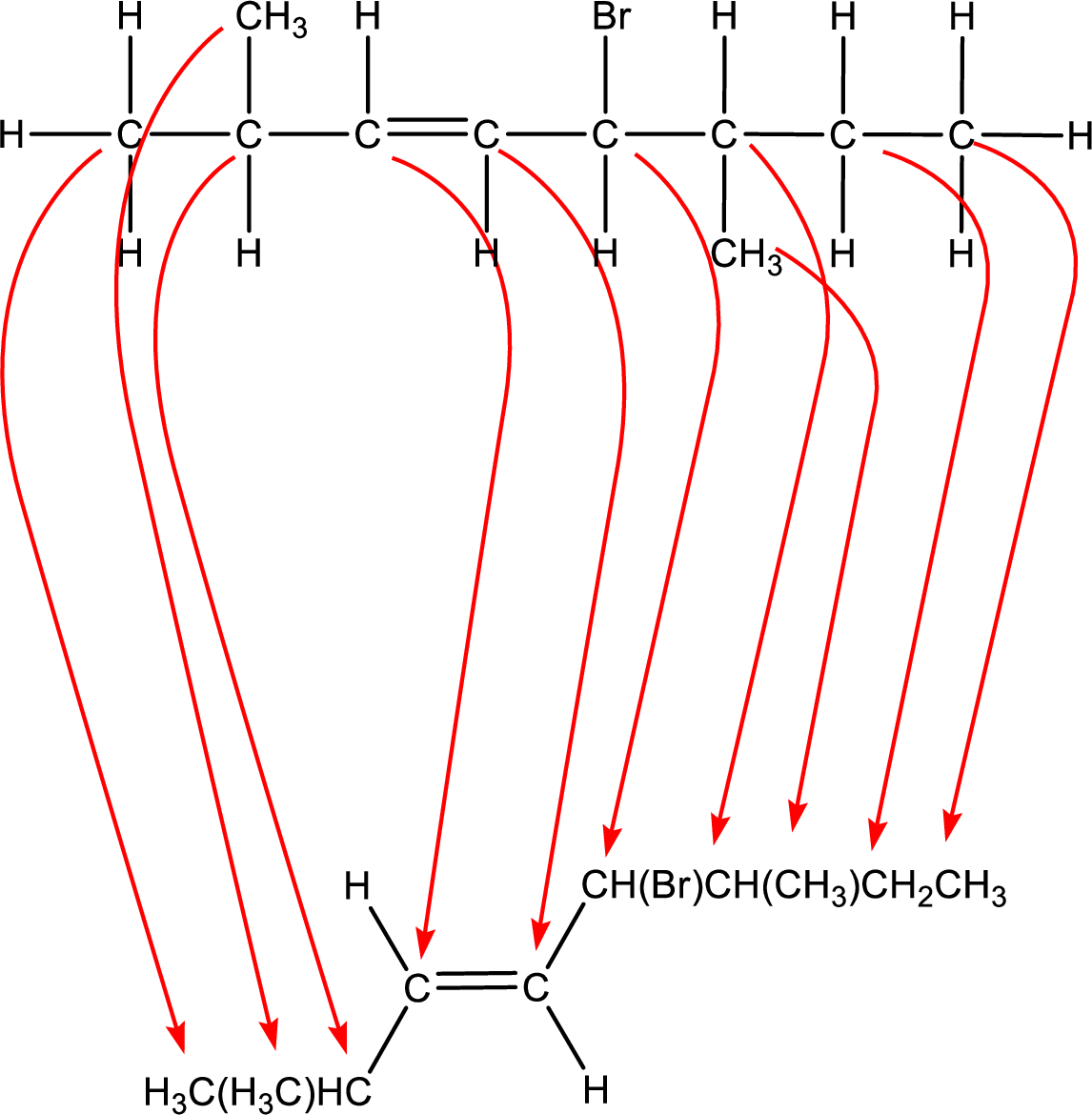
Condensed formula for trans-5-bromo-2,6-dimethyl-3-octene is drawn as shown.

Want to see more full solutions like this?
Chapter 11 Solutions
GENERAL,ORGANIC,+BIOCHEMISTRY(LL)-PKG
- H CH3 CH3 b) Write the products of your compound and the following reagents. If the reaction would not work for your compound, write "no reaction" and explain the problem. NaCN H* H₂NNHCH5 H* -à NaBH -à CH2MgBr Cro₁₂ --à H3O+ -à c) Would your compound give a positive Tollen's test? Why or why not?arrow_forwardHomework 4 Chem 204 Dr. Hellwig Consider this compound, which will be referred to as "your compound". a) Name your compound according to the IUPAC system. Include stereochemistry (E/Z/R/S) H CH3 CH3arrow_forwardWhat is the mechanism for this?arrow_forward
- 21.50 Determine the combinations of haloalkane(s) and alkoxide(s) that could be used to synthesize the following ethers through Williamson ether synthesis. (a) (c) (d) (e) (f) H₂COarrow_forward1. Arrange the following in order of increasing bond energy (lowest bond energy first, highest bond energy last). Provide your rationale. C=C, C-F, C=C, C-N, C-C List the bond order for each example.arrow_forwardWhat is the major enolate formed when treated with LDA? And why that one?arrow_forward
- 4. Calculate the total number of sigma bonds and total number of pi bonds in each of the following compounds. a. HH :D: +1 I H-N-C-C-O-H I H b. HH H Н :N=C-C-C=C-CEC-H :0: total o H-C-H H-C = `C-H I H. 11 H-C = C= CH H total o total π total π 1 Harrow_forwardIn the following reaction, what quantity in moles of CH₃OH are required to give off 4111 kJ of heat? 2 CH₃OH (l) + 3 O₂ (g) → 2 CO₂ (g) + 4 H₂O(g) ∆H° = -1280. kJarrow_forwardIndicate the processes in the dismutation of Cu2O.arrow_forward
- 1. Consider these three reactions as the elementary steps in the mechanism for a chemical reaction. 2600 2400 2200 2000 1800 1600 1400 1200 1000 800 Potential Energy (kJ) 600 400 200 0 -200- -400 -600- -800 (i) Cl₂ (g) + Pt(s) → 2Cl (g) + Pt(s) (ii) Cl (g)+ CO (g) + Pt (s) → CICO (g) + Pt (s) Ea = 1550 kJ Ea = 2240 kJ (iii) Cl (g) + CICO (g) → Cl₂CO (g) Ea = 2350 kJ AH=-950 kJ ΔΗ = 575 ΚΙ AH=-825 kJ a. Draw the potential energy diagram for the reaction. Label the data points for clarity. The potential energy of the reactants is 600 kJ Reaction Progress b. What is the overall chemical equation? c. What is the overall change in enthalpy for the above chemical reaction? d. What is the overall amount of activation energy for the above chemical reaction? e. Which reaction intermediate would be considered a catalyst (if any) and why? f. If you were to add 2700kJ of energy to the reaction (e.g. 2700 kl of heat or electricity), would you be able to make the reaction reverse itself (i.e. have…arrow_forwarddraw the enolate anion and the carbonyl that would be needed to make this product through an aldol addition reaction.arrow_forwardDraw the Michael Adduct and the final product of the Robinson annulation reaction. Ignore inorganic byproducts.arrow_forward
 ChemistryChemistryISBN:9781305957404Author:Steven S. Zumdahl, Susan A. Zumdahl, Donald J. DeCostePublisher:Cengage Learning
ChemistryChemistryISBN:9781305957404Author:Steven S. Zumdahl, Susan A. Zumdahl, Donald J. DeCostePublisher:Cengage Learning ChemistryChemistryISBN:9781259911156Author:Raymond Chang Dr., Jason Overby ProfessorPublisher:McGraw-Hill Education
ChemistryChemistryISBN:9781259911156Author:Raymond Chang Dr., Jason Overby ProfessorPublisher:McGraw-Hill Education Principles of Instrumental AnalysisChemistryISBN:9781305577213Author:Douglas A. Skoog, F. James Holler, Stanley R. CrouchPublisher:Cengage Learning
Principles of Instrumental AnalysisChemistryISBN:9781305577213Author:Douglas A. Skoog, F. James Holler, Stanley R. CrouchPublisher:Cengage Learning Organic ChemistryChemistryISBN:9780078021558Author:Janice Gorzynski Smith Dr.Publisher:McGraw-Hill Education
Organic ChemistryChemistryISBN:9780078021558Author:Janice Gorzynski Smith Dr.Publisher:McGraw-Hill Education Chemistry: Principles and ReactionsChemistryISBN:9781305079373Author:William L. Masterton, Cecile N. HurleyPublisher:Cengage Learning
Chemistry: Principles and ReactionsChemistryISBN:9781305079373Author:William L. Masterton, Cecile N. HurleyPublisher:Cengage Learning Elementary Principles of Chemical Processes, Bind...ChemistryISBN:9781118431221Author:Richard M. Felder, Ronald W. Rousseau, Lisa G. BullardPublisher:WILEY
Elementary Principles of Chemical Processes, Bind...ChemistryISBN:9781118431221Author:Richard M. Felder, Ronald W. Rousseau, Lisa G. BullardPublisher:WILEY





